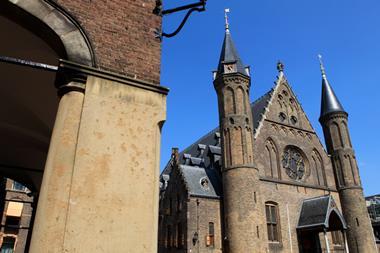PSL, the €330m Dutch sector scheme for the shoemaking and leather industry, is to transfer its pensions accrual to Detailhandel, the €20.3bn pension fund for the retail sector.
It said its existing pension rights were likely to follow, but it had not made a decision on this yet.
On its website, PSL cited increasing costs and stricter regulatory requirements, and explained that at Detailhandel its members would receive a better pension requiring lower contributions. Charlotte Soons, PSL’s chair, said Detailhandel had an annual accrual rate of 1.62% against a contribution level of 21.6%.
This year, the sector scheme had to reduce its annual pensions accrual to 1.24% in order to keep the contribution level at 25.8%. In its annual report, it attributed the situation to a combination of low interest rates, rising implementation costs, and its lack of scale.
Last year, PSL reported implementation costs of €144 per participant, whereas Detailhandel spent €76. Combined costs of asset management and transactions were 0.68% at PSL and 0.17% at Detailhandel.
Currently, PSL has 1,100 active participants, affiliated with almost 100 employers. At 2017-end, it had 19,000 deferred members and pensioners in total.
Soons said the transfer was subject to the approval of regulator De Nederlandsche Bank (DNB), as well as advice from the scheme’s supervisory board and accountability body.
At May-end, funding of PSL and Detailhandel stood at 115.6% and 110.9%, respectively. If the difference remains at year-end, PSL’s participants are likely to receive an extra index-linked bonus.
Dutch schemes join forces to improve public’s faith in sector
Large Dutch pensions providers and their clients have started a joint initiative to improve the general public’s faith in the sector and the pensions system.
According to a spokeswoman for the €56bn metal scheme PME, one of the initiators, the network has met a couple of times at board member and director level, and is now fleshing out an action plan.
She indicated that the pensions providers and asset managers MN, APG, PGGM and TKP have joined the initiative along with their affiliated pension funds.
“During the first phase the focus is on increasing the awareness among the network’s members of the worries and questions about pensions in society,” she said.
In its annual report, MN, the €129bn asset manager and provider for the large metal schemes PME and PMT, described the co-operation as “trail-blazing”.
“We are now looking outward, putting ourselves into the shoes of the participant and trying to get in touch again,” it said.
APG, the €480bn asset manager and pensions provider for civil service scheme ABP, said in its annual report that it wanted to start a “broad movement within the sector, and subsequently start a dialogue with society”.
PNO Media credits active investment for long-term outperformance
The €6bn Dutch pension fund PNO Media achieved an annual outperformance of 0.7% on average since 2005 because of its active investment strategy.
In its annual report for 2017, the non-mandatory sector scheme for the media and the creative sector said its equity portfolio – 36% of the overall asset mix – had generated 14.6%, an outperformance of 4.6 percentage points.
US stock holdings were boosted by a 75% currency hedge of the dollar, which added 10 percentage points to the initial result of 8%.
PNO Media’s overall investment return of 8.2%, combined with higher interest rates, helped its funding level to jump from 95.6% to 105.1% last year.
As a consequence of the actively managed of part of its portfolio, PNO Media had spent 0.8% of its assets on asset management and transactions, against 0.5% on average for the pensions sector.
The annual report revealed that the scheme’s accountability body (VO) had criticised PNO’s growth strategy, developed in 2014 and aimed at attracting employers in the creative sector through offering a variety of pension plans.
The VO noted that the pension fund hadn’t established benchmarks, which made it difficult to judge the strategy’s impact.
Responding to questions from IPE’s Dutch sister publication Pensioen Pro, the pension fund’s board indicated that the targets of its growth strategy had been met, and that it had informed the VO about its concrete goals in the meantime.
It said that the targets involved numbers of participants and employers as well as the scale of its pension assets, but declined to be specific about these numbers.
Last year, its total membership rose from 16,387 to 16,648, while the number of affiliated employers fell from 421 to 408, in part as a consequence of corporate mergers.












No comments yet